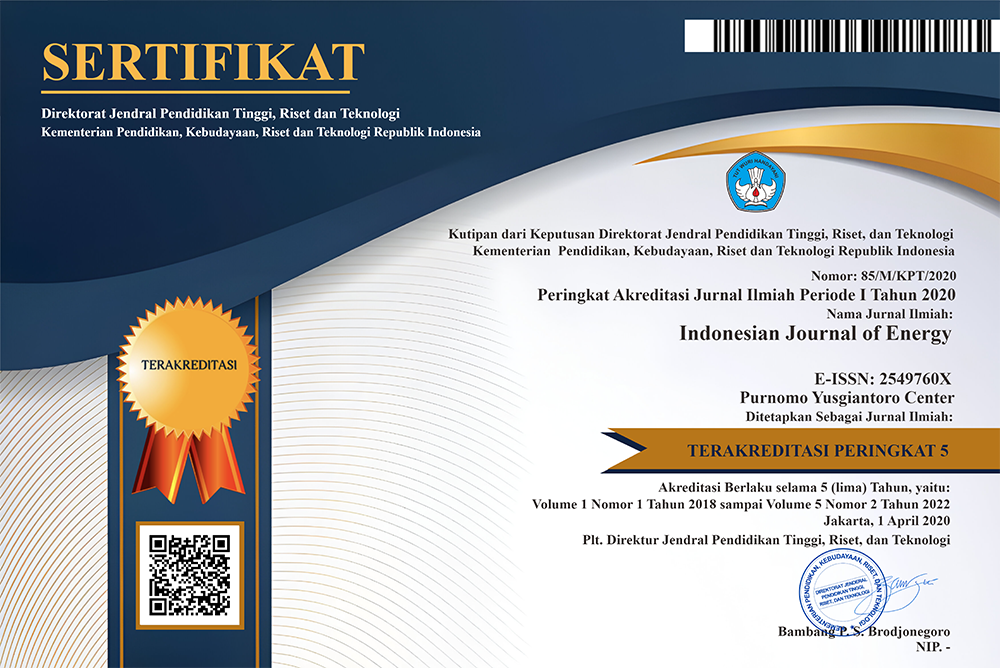Investigation of the price linkage between Asian LNG spot and Far East Asian LNG prices and its implications
Abstract
For so many times, Far East Asian liquid natural gas (LNG) buyers have been using price linked to crude oil-indexed, now they need to find another alternative pricing formula for their crucial energy supply as a better price structure that could reflect the market is needed. LNG spot price is expected to be the pillar for the future LNG trading, especially for Far East Asia Market. As less and less long-term contracts are signed in the Far East Asia Market, this creates an additional demand for the LNG in the spot market, while it raises some issues about the presence of different LNG pricing mechanisms. Most of the LNG spot prices in Asia are indexed to the relatively low natural gas prices in Atlantic Basin. Furthermore, the advancement of drilling technology in the US drives down its natural gas prices, resulting in price discrepancies between Asian LNG spot and East Asian LNG prices. This study investigates whether there is a price linkage between Asian LNG spot and East Asian LNG prices. This study comprehends 91 observations collected from January 2010 to July 2017. Johansen co-integration tests were carried out to examine the existence of long-run relationship on the spot, Japanese and South Korean LNG prices. The Augmented Dickey-Fuller (ADF), Phillip-Perron (PP), and Kwiatkowski-Phillips-Schmidt-Shin (KPSS) unit root tests were conducted first before proceeding to the co-integration tests. The results showed that Asian LNG spot prices did not have price linkage for monthly averages of Japanese and South Korean LNG prices. The analyses also indicated that Taiwan LNG markets move together with Asian LNG spot markets. As a conclusion, the results inferred that supply dependency on LNG spot cargoes governed the price linkage among these Asian LNG markets. The use of gas indexed LNG price mechanism did not reflect the economic fundamentals in Asia-Pacific Basin.
JEL Classification: Q41
Downloads
References
Argenton, M. (2012). Empirical Identification of Japanese LNG S-Curve Contracts: Cointegration and Structural Breaks. Chicago, USA: University of Illinois.
Aruga, K. (2013). The U.S. Shale Gas Revolution and Its Effect on International Gas Markets. MPRA Paper 49545. Munich, Germany: University Library of Munich.
Aruga, K., Managi, S. (2011). Linkage among the U.S. Energy Futures Markets. MPRA Paper 36086. Munich, Germany: University Library of Munich.
Asche, F., Gjolberg, O., Volker, T. (2003). Price Relationships in The Petroleum Market: an Analysis of Crude Oil and Refined Product Prices. Energy Economics, 25, pp. 289-301.
Bachmeier, L., Griffin, J.M. (2006). Testing for Market Integration: Crude Oil, Coal, and Natural Gas. Energy Journal, 27, pp. 55-71.
BP Statistical Review of World Energy 2013 Workbook. (2013). British Petroleum.
Darrat, A.F. (1998). Tax and Spend, or Spend and Tax? an Inquiry into the Turkish Budgetary Process. Southern Economic Journal, 64, 940-956.
Ellis, S. (2013). Evolution of the spot trade since Fukushima. ICIS.
Engle, R.F., Granger, C.W.J. (1987). Co-Integration and Error Correction: Representation, Estimation, and Testing. Econometrica, 55, 2, pp. 251-276.
Flower, A., Liao, J. (2012). The Pricing of Internationally Traded Gas (pp. 338-374). England: Oxford Institute for Energy Studies (OIES).
GIIGNL. (2013). The LNG Industry in 2012. Accessed in http://www.giignl.org/publications
Goodwin, B.K., Schroeder, T.C. (1991). Cointegration Tests and Spatial Price Linkages in Regional Cattle Markets. American Journal of Agricultural Economics, 73, pp. 452-464.
Hartley, P.R., Medlock, K.B., Rosthal, J.E. (2008). The Relationship of Natural Gas to Oil Prices. Energy Journal, 29, pp. 47-65.
Higashi, N. (2009). Natural Gas in China - Market evolution and strategy. Paris, France: International Energy Agency.
IGU Annual Report and Accounts 2010. (2011). Barcelona, Spain: International Gas Union (IGU).
Johansen, S., Juselius, K. (1990). Maximum Likelihood Estimation and Inference on Cointegration – with Applications to the Demand for Money. Oxford Bulletin of Economics and Statistics, 52, pp. 169-210.
Kilian, L. and Murphy, D. (2014) The Role of Inventories and Speculative Trading in the Global Market for Crude Oil. Journal of Applied Econometrics, 29, pp. 454-478.
Lin, S. C. (2012). Energy Policy & LNG Supply and Demand in Taiwan. Taiwan: CPC Corporation.
Lutkepohl, H., Saikkonen, P., Trenkler, C. (2000). Maximum Eigenvalue Versus Trace Tests for the Cointegrating Rank of a VAR Process. Discussion Papers, Interdisciplinary Research Project 373: Quantification and Simulation of Economic Processes.
Maggiora, D., Skerman, R. (2009). Johansen Cointegration Analysis of American and European Stock Market Indices: An Empirical Study. Lund University.
Medlock III, K. (2014). Natural Gas Price in Asia: What to Expect and What It Means. Houston: James A. Baker III Institute for Public Policy.
Miyamoto A., Ishiguro, C. (2009). A New Paradigm for Natural Gas Pricing in Asia: A Perspective on Market Value. England: Oxford Institute for Energy Studies (OIES).
Miyamoto, A., Ishiguro, C., Yamada, T. (2012). Irrational LNG Pricing Impedes Development of Asian Natural Gas Markets: A Perspective on Market Value. Osaka: Osaka Gas.
Miyazaki, K., Limam, M. (2013). Will LNG Exports from North America / East Africa Drive Global Price Integration?. New York: Poten & Partners.
Phillips, P.C.B., & Ouliaris, S. (1998). Testing for Cointegration Using Principal Component Methods. Economics Dynamics and Control, 12, pp. 205-230.
Rogers, D., White, M., Phua, D. (2014). Prospects for Development of an Asian LNG Trading Hub. King & Spalding: Energy Newsletter.
Ssekuma, R. (2011). A Study of Cointegration Models with Applications. Zambia: University of Africa.
Stern, J., Rogers, H. (2014). Challenges to JCC Pricing in Asian LNG Markets. England: Oxford Institute for Energy Studies (OIES).
Tae-Hoon, A. (2009). Supply and Demand Trends and Plans for Natural Gas in South Korea. Japan: The Institute of Energy Economics.
Vivoda, V. (2014). LNG import diversification in Asia. Energy Strategy Reviews, 2, pp. 289-297.
Warner, K., Varro, L., Corbeau, A. (2013). Developing a Natural Gas Trading Hub in Asia – Obstacles and Opportunities. Paris, France: International Energy Agency.
Wei W.S. (2006). Time Series Analysis: Univariate and Multivariate. Boston: Pearson.
World Energy Outlook 2014: Executive Summary. (2014). Paris, France: International Energy Agency (IEA).
Yule G. U. (1989). Why Do We Sometimes Get Nonsense-Corrections Between Time Series? – A Study In Sampling and the Nature of Time Series. Royal Statistical Society, 1, pp. 1-63.
















